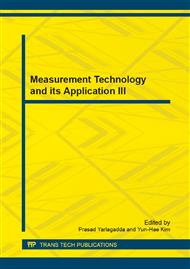p.65
p.71
p.76
p.82
p.90
p.96
p.100
p.106
p.114
The Analysis of Solar Storms’ Influence on GPS Measurement Errors
Abstract:
This paper mainly analyzes the effects of solar storms on GPS measurement errors. Solar storms produce a lot of charged particles, which makes the electron density in ionosphere increase, and in further affects the ionosphere delay errors. Ionosphere delay errors are one of the main sources of GPS measurement error, which is a direct impact on measurement precision of GPS. GPS distance errors are caused by ionosphere delay errors. In the case of solar storms, dual frequency observation cannot completely remove ionosphere delay, so in measurement process appropriate methods will be used to reduce errors in GPS measurement, for example, during the observation in the night and increased observation period. By comparing and analyzing the GPS observation data in solar storms and under normal conditions with GAMIT/GLOBK software, a conclusion is made in this paper that observing in the night and the increased observation period can reduce the GPS measurement errors.
Info:
Periodical:
Pages:
90-95
Citation:
Online since:
June 2014
Authors:
Keywords:
Price:
Сopyright:
© 2014 Trans Tech Publications Ltd. All Rights Reserved
Share:
Citation:


